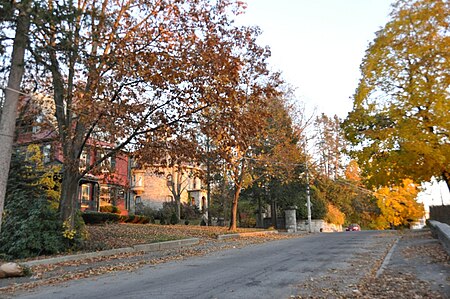Wannalancit Street Historic District
Historic districts in Lowell, MassachusettsHistoric districts on the National Register of Historic Places in MassachusettsMiddlesex County, Massachusetts Registered Historic Place stubsNRHP infobox with nocatNational Register of Historic Places in Lowell, Massachusetts ... and 1 more
Use mdy dates from August 2023

The Wannalancit Street Historic District is a historic district at 14-71 Wannalancit St., and 390, 406 Pawtucket Street in Lowell, Massachusetts. This section of Wannalancit Street includes a remarkably well preserved and distinctive 19th century houses, representing a cross section of popular architectural styles of the period. The most unusual house in the district is the round Jonathan Bowers House (built 1872); the oldest building is a c. 1853 vernacular Greek Revival cottage at 22 Wannalancit Street.The district was listed on the National Register of Historic Places in 1998.
Excerpt from the Wikipedia article Wannalancit Street Historic District (License: CC BY-SA 3.0, Authors, Images).Wannalancit Street Historic District
Wannalancit Street, Lowell The Acre
Geographical coordinates (GPS) Address Nearby Places Show on map
Geographical coordinates (GPS)
| Latitude | Longitude |
|---|---|
| N 42.646666666667 ° | E -71.329444444444 ° |
Address
Wannalancit Street 43
01854 Lowell, The Acre
Massachusetts, United States
Open on Google Maps








